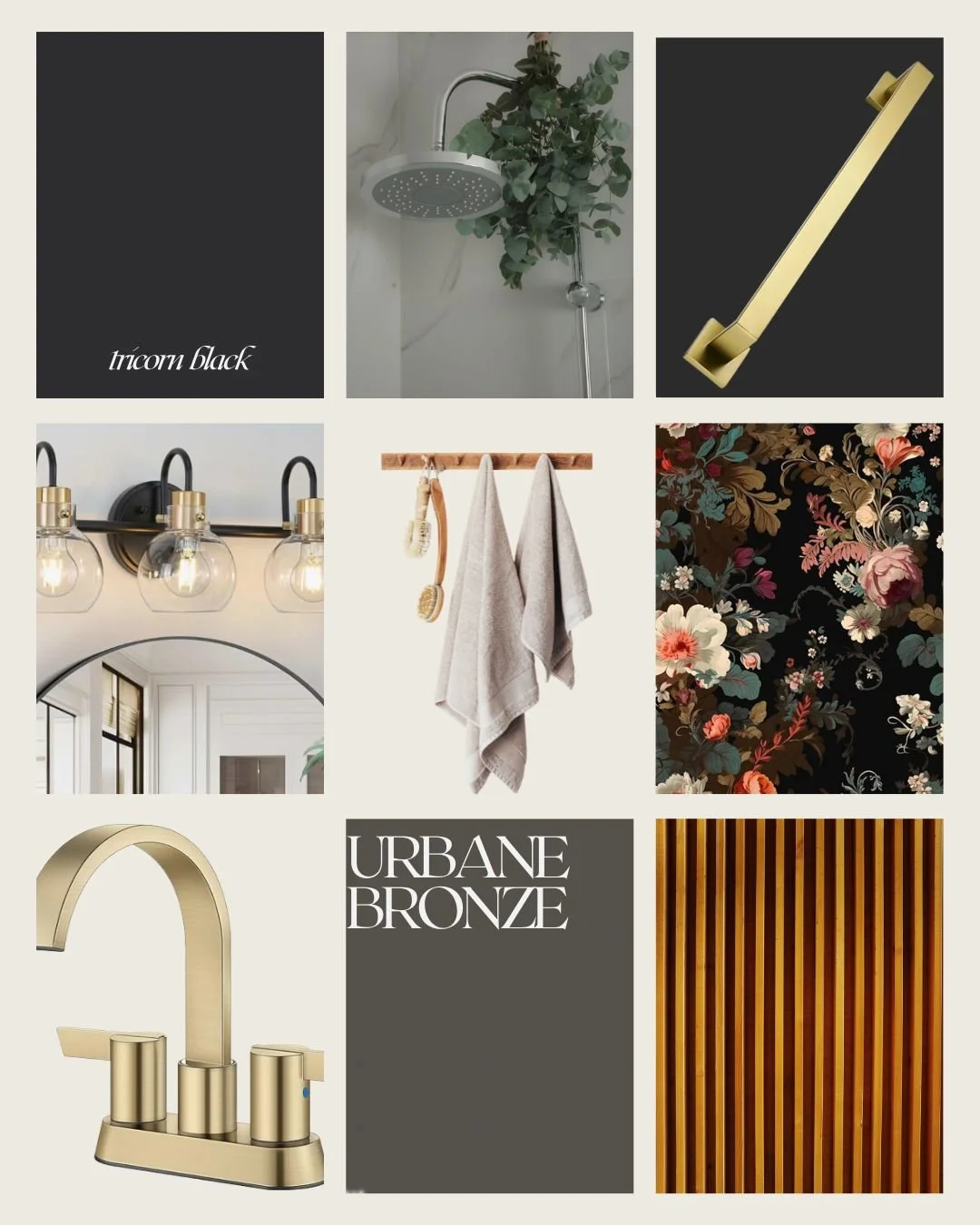The Mood Board Behind My Primary Bathroom Refresh
This post contains affiliate links. Read my full disclosure here.
I’m convinced that a good mood board is magic. It takes all the random ideas floating in your head — the paint swatches, Pinterest saves, and half-finished dreams — and turns them into a clear visual direction. That’s exactly how my primary bathroom refresh started: not with demolition, but with a digital collage that helped me see where I wanted to go.
Why I Created a Mood Board (Even for a “Temporary” Space)
This bathroom refresh wasn’t meant to be forever. I’ve got plans for a full primary suite renovation eventually — new layout, tile, fixtures, everything. But I didn’t want to wait years to love a space I’m using every single day.
So before I picked up a paintbrush, I built a mood board. I wanted to define the direction. It helped me stay intentional with every choice — picking finishes, colors, and hardware that worked with my long-term vision but didn’t break the budget now.
A mood board gives you permission to dream, but it also keeps you focused. It’s how I made sure this refresh felt cohesive with the rest of my house and not just like a one-off project.
The Inspiration
When I started, I wanted the bathroom to feel calm but elevated — not overly feminine, but still soft. Something between a boutique hotel and a cozy home spa.
My mood board included:
Color palette: deep brown-grey, creamy white, and natural wood tones
Textures: bold floral pattern, soft plush towels
Finishes: polished fixtures, warm lighting, and hints of black for contrast
Inspiration photos: boutique hotel bathrooms, layered lighting, moody wall colors
Each element served a purpose. The dark brown-grey added depth, the brass added warmth, and the neutrals balanced it all out. Together, they created a look that felt grounded — modern, but timeless.
Building the Mood Board
I started with the wallpaper that I had found and loved. From there, I scoured Pinterest looking for inspiration - “dark moody primary bath” was a pretty consistent search. I ordered some Samplize samples to test colors that would coordinate well with the wallpaper. I then decided on black and gold fixtures so as to not have to commit to one finish, which gave me more flexibility. I layered in a few details that helped bring the vision to life. Once I saw it all together, I pulled out anything that felt too trendy or busy. By the time I started painting, the board had already made most of my decisions for me. It was like a design roadmap — all I had to do was follow it.
How the Mood Board Guided My Refresh
The beauty of working from a mood board is that it saves you from “decision fatigue.” Every time I questioned what light fixture to choose or whether the wallpaper pattern was too bold, I’d go back to the board. It reminded me of the bigger picture — calm and cohesive, with a slight bold punch.
Every choice I made feels like it belongs to my long-term home renovation plan and color palette. And that makes me love it even more.
What I Learned
Mood boards aren’t just for designers — they’re for anyone who wants to make better design decisions. Even a small refresh benefits from visual direction. It keeps you consistent, curbs impulse buys, and helps ensure every space in your home speaks the same design language.
The Reveal
Now that my refresh is done, I keep the mood board filed away inside my design folder for this project. Every time I look at it alongside the finished product photos, I’m reminded how powerful it is to see your vision before you start building it.
Want to create your own mood board? Start with one image that makes you feel something and build from there. You can drop it in a simple Word document or use an online tool like Canva. I linked my favorite products and tools from this project in my Shop — so you can start visualizing your dream space, too.

